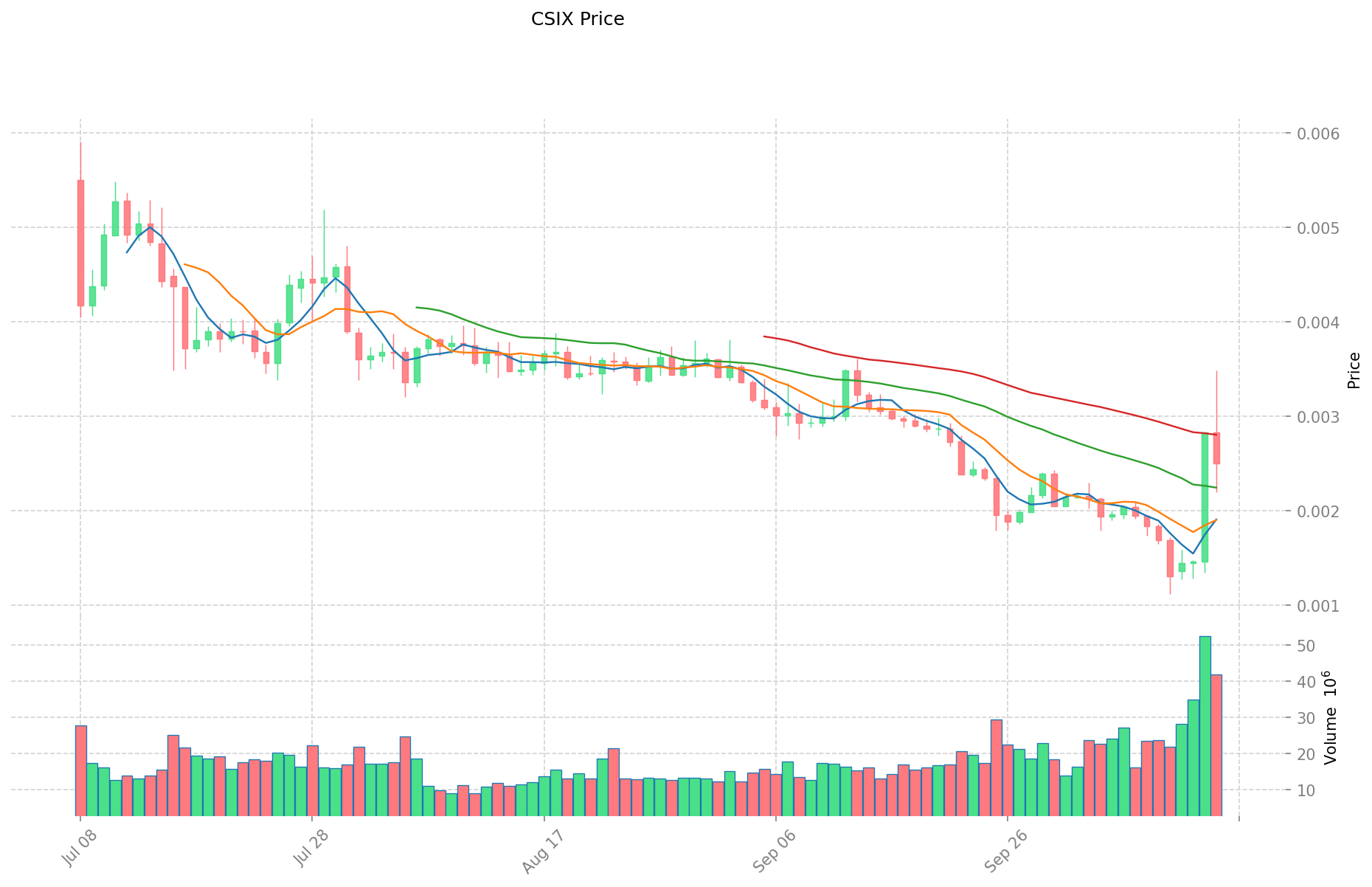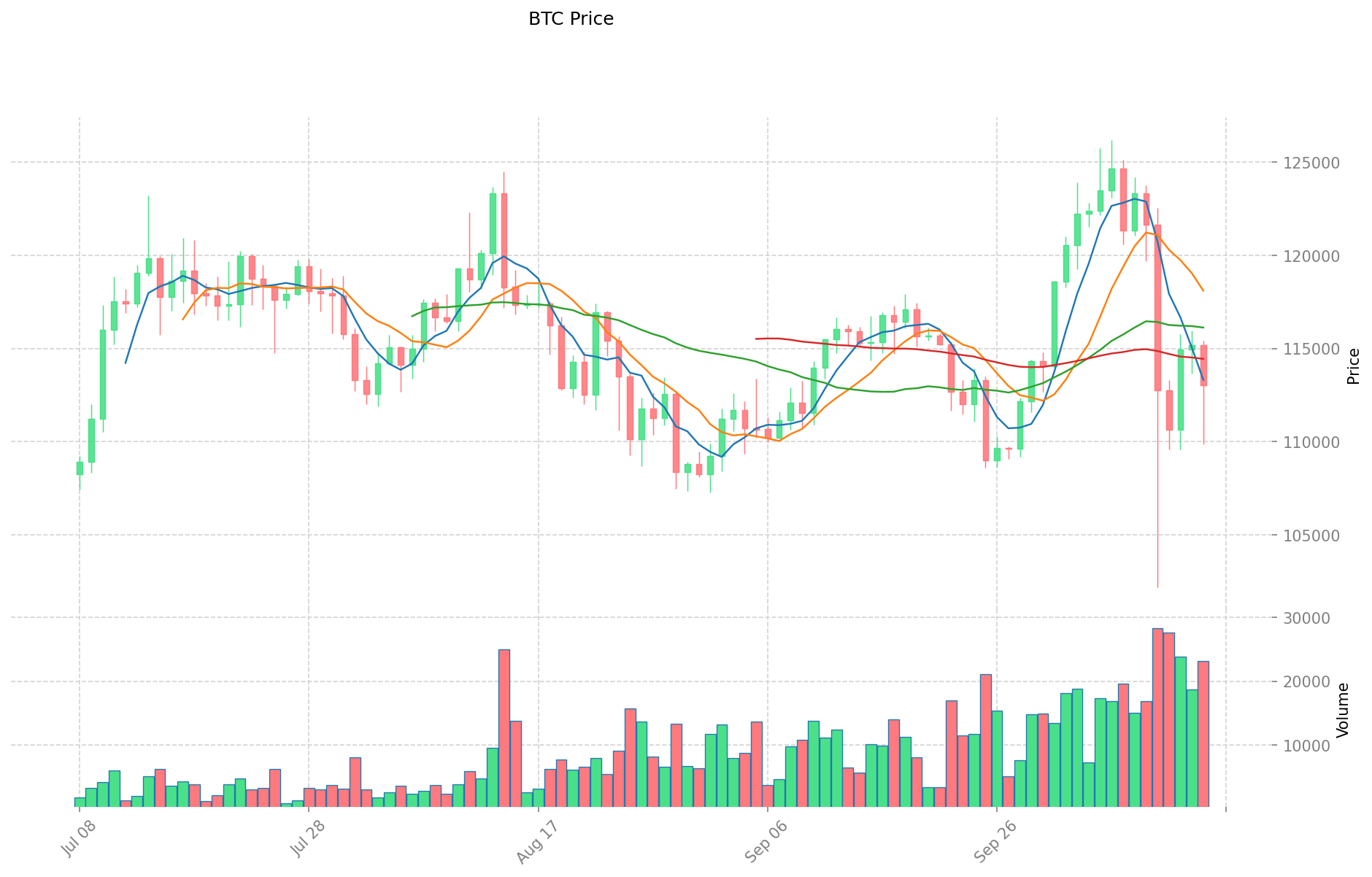CSIX ve BTC: Dijital Varlıkların Performansı ile Benimsenme Eğilimlerinin Karşılaştırmalı Analizi

Giriş: CSIX ve BTC Yatırımı Karşılaştırması
Kripto para piyasasında Carbon (CSIX) ile Bitcoin (BTC) arasındaki kıyaslama, yatırımcılar açısından vazgeçilmez bir başlıktır. Bu iki varlık; piyasa değeri sıralaması, kullanım alanları ve fiyat performansı açısından belirgin biçimde ayrışırken, kripto varlıklar ekosisteminde farklı konumları temsil eder.
Carbon (CSIX): Şifreli mesajlaşma ve oyunlaştırılmış ödül sistemi sunan sosyal şifreleme platformu olarak hayata geçirilmiştir.
Bitcoin (BTC): 2008’den bu yana “dijital altın” olarak anılır ve küresel işlem hacmi ile piyasa değeri açısından lider kripto varlık konumundadır.
Bu makale, CSIX ve BTC’nin yatırım değerlerini; tarihsel fiyat eğilimleri, arz mekanizmaları, kurumsal benimseme, teknolojik ekosistemler ve gelecek öngörüleri açısından detaylı biçimde analiz edecek, yatırımcıların en çok merak ettiği şu soruya odaklanacaktır:
“Şu anda hangisi daha avantajlı bir yatırım?”
I. Fiyat Geçmişi Karşılaştırması ve Güncel Piyasa Tablosu
CSIX ve BTC'nin Tarihsel Fiyat Eğilimleri
- 2023: CSIX, 20 Şubat 2023’te 0,2389 dolar ile tarihinin en yüksek seviyesini gördü.
- 2025: BTC, 7 Ekim 2025’te 126.080 dolar ile yeni rekorunu kırdı.
- Kıyaslama: Son piyasa döngüsünde CSIX, zirve olan 0,2389 dolardan 0,00252 dolara kadar gerilerken; BTC, yükseliş eğilimini koruyarak daha sağlam bir direnç gösterdi.
Güncel Piyasa Durumu (15 Ekim 2025)
- CSIX güncel fiyatı: 0,00252 dolar
- BTC güncel fiyatı: 112.751,1 dolar
- 24 saatlik işlem hacmi: 114.881,75 dolar (CSIX) vs 2.612.227.212,86 dolar (BTC)
- Piyasa Duyarlılık Endeksi (Korku & Açgözlülük Endeksi): 34 (Korku)
Anlık fiyatları görüntülemek için tıklayın:
- CSIX güncel fiyatı için Piyasa Fiyatı
- BTC güncel fiyatı için Piyasa Fiyatı


II. CSIX ve BTC Yatırım Değerini Şekillendiren Temel Etkenler
Arz Mekanizması Karşılaştırması (Tokenomik)
- BTC: 21 milyonluk sabit arz ve dört yılda bir yarılanan ödül yapısı
- CSIX: Dijital varlıklar ve DApp’ler için merkeziyetsiz altyapı, zincirler arası uyumluluk odaklı
- 📌 Tarihsel Dinamik: Bitcoin’in yarılanma döngüleri sıklıkla fiyat artış evrelerini tetiklerken, CSIX’in fiyatı daha çok ekosistem içindeki benimsenmeye ve kullanım alanına bağlıdır.
Kurumsal Benimseme ve Piyasa Uygulamaları
- Kurumsal Portföyler: Bitcoin, MicroStrategy gibi şirketlerin edinim maliyetinin %8 üzerinde değerlenen büyük BTC rezervleriyle güçlü kurumsal ilgi görmektedir
- Kurumsal Uygulamalar: Bitcoin, stratejik rezerv ve “dijital değer saklama aracı” olarak öne çıkarken; CSIX, ödeme çözümleri, sadakat programları ve kurumsal uygulamalar sunar
- Ulusal Politikalar: Bitcoin, küresel çapta çeşitlenen düzenlemelere tabi olup, dolarizasyonun azaltılması trendiyle ulusal rezervlerdeki rolü daha fazla tartışılmaktadır
Teknik Gelişim ve Ekosistem Oluşumu
- CSIX Teknik Güncellemeler: 2025’e dek zincirler arası uyumluluk ve ölçeklenebilirlik için geliştirmeler planlanıyor
- BTC Teknik Gelişimi: Katman-2 çözümleri ve değer saklama işlevine yönelik altyapı iyileştirmeleri
- Ekosistem Kıyaslaması: BTC, dijital varlık sınıfının öncüsü olarak güçlü konumda; CSIX ise ödeme sistemleri ve kurumsal çözümlere odaklanıyor
Makroekonomik Unsurlar ve Piyasa Döngüleri
- Enflasyonist Ortamlarda Performans: Bitcoin, giderek “ideolojik yatırım” ve enflasyon karşıtı varlık olarak algılanıyor
- Makroekonomik Politika: Deutsche Bank uzmanları, kurumsal ilgiyle birlikte ABD dolarındaki zayıflamanın Bitcoin’in değerine olumlu yansıyacağını belirtiyor
- Jeopolitik Gelişmeler: Küresel ekonomik belirsizlik ve dolarizasyon karşıtı akımlar her iki varlığı da etkilerken, Bitcoin’in sınır tanımayan, nötr niteliği bir avantaj olarak öne çıkıyor
III. 2025-2030 Fiyat Tahmini: CSIX vs BTC
Kısa Vadeli Tahmin (2025)
- CSIX: Muhafazakâr 0,00132028 - 0,002539 dolar | İyimser 0,002539 - 0,00337687 dolar
- BTC: Muhafazakâr 61.954,695 - 112.644,9 dolar | İyimser 112.644,9 - 132.920,982 dolar
Orta Vadeli Tahmin (2027)
- CSIX büyüme evresine girebilir; tahmini fiyat aralığı 0,00220070364 - 0,00379798854 dolar
- BTC boğa piyasasına geçebilir; tahmini fiyat aralığı 120.253,6124154 - 204.286,2572358 dolar
- Baz itici güçler: Kurumsal sermaye akışı, ETF’ler, ekosistem gelişimi
Uzun Vadeli Tahmin (2030)
- CSIX: Temel senaryo 0,004337598255094 - 0,004985745120798 dolar | İyimser senaryo 0,004985745120798 - 0,007129615522742 dolar
- BTC: Temel senaryo 122.483,2940455807872 - 191.380,14694621998 dolar | İyimser senaryo 191.380,14694621998 - 239.225,183682774975 dolar
Yasal Uyarı: Bu tahminler yalnızca bilgilendirme amaçlıdır ve yatırım tavsiyesi niteliği taşımaz. Kripto para piyasaları yüksek oynaklığa ve öngörülemezliğe sahiptir. Yatırım kararı almadan önce mutlaka kendi araştırmanızı yapınız.
CSIX:
| Yıl | Tahmini En Yüksek Fiyat | Tahmini Ortalama Fiyat | Tahmini En Düşük Fiyat | Değişim Oranı |
|---|---|---|---|---|
| 2025 | 0,00337687 | 0,002539 | 0,00132028 | 0 |
| 2026 | 0,004141109 | 0,002957935 | 0,0021888719 | 17 |
| 2027 | 0,00379798854 | 0,003549522 | 0,00220070364 | 40 |
| 2028 | 0,0048126194037 | 0,00367375527 | 0,0019470902931 | 45 |
| 2029 | 0,005728302904747 | 0,00424318733685 | 0,003436981742848 | 68 |
| 2030 | 0,007129615522742 | 0,004985745120798 | 0,004337598255094 | 97 |
BTC:
| Yıl | Tahmini En Yüksek Fiyat | Tahmini Ortalama Fiyat | Tahmini En Düşük Fiyat | Değişim Oranı |
|---|---|---|---|---|
| 2025 | 132.920,982 | 112.644,9 | 61.954,695 | 0 |
| 2026 | 166.984,79976 | 122.782,941 | 72.441,93519 | 8 |
| 2027 | 204.286,2572358 | 144.883,87038 | 120.253,6124154 | 28 |
| 2028 | 179.822,615722137 | 174.585,0638079 | 148.397,304236715 | 54 |
| 2029 | 205.556,45412742146 | 177.203,8397650185 | 154.167,340595566095 | 57 |
| 2030 | 239.225,183682774975 | 191.380,14694621998 | 122.483,2940455807872 | 69 |
IV. Yatırım Stratejisi Kıyaslaması: CSIX vs BTC
Uzun Vadeli ve Kısa Vadeli Yatırım Stratejileri
- CSIX: Ekosistem potansiyeli ve ödeme çözümlerine odaklanan yatırımcılar için uygundur
- BTC: İstikrar ve enflasyondan korunma arayan yatırımcılar için uygundur
Risk Yönetimi ve Varlık Dağılımı
- Muhafazakâr yatırımcılar: %10 CSIX, %90 BTC
- Agresif yatırımcılar: %30 CSIX, %70 BTC
- Riskten korunma için: Stablecoin dağılımı, opsiyonlar ve çoklu döviz portföyleri
V. Potansiyel Risk Kıyaslaması
Piyasa Riski
- CSIX: Daha yüksek volatilite, düşük likidite ve hızlı fiyat dalgalanmaları
- BTC: Piyasa duyarlılığı ve makroekonomik değişimlere karşı hassasiyet
Teknik Risk
- CSIX: Ölçeklenebilirlik ve ağ istikrarı
- BTC: Madencilik yoğunlaşması ve güvenlik açıkları
Düzenleyici Risk
- Küresel düzenleyici politikalar, her iki varlık üzerinde farklı etkiler yaratabilir
VI. Sonuç: Hangisi Daha Avantajlı Yatırım?
📌 Yatırım Değeri Özeti:
- CSIX’in avantajları: Pratik uygulamalar ve ekosistem büyüme potansiyeli
- BTC’nin avantajları: Yerleşik piyasa hakimiyeti, kurumsal benimseme ve değer saklama imajı
✅ Yatırım Tavsiyesi:
- Yeni yatırımcılar: Portföyde küçük bir BTC payı ile çeşitlendirme yapılabilir
- Deneyimli yatırımcılar: Piyasa görünümü ve risk toleransına göre BTC ve CSIX arasında denge kurulabilir
- Kurumsal yatırımcılar: Yerleşik piyasa konumu ve düzenleyici netlikten dolayı BTC’ye odaklanmalı
⚠️ Risk Uyarısı: Kripto para piyasalarında yüksek volatilite vardır. Bu içerik yatırım tavsiyesi değildir. None
VII. SSS
S1: CSIX ve BTC arasındaki ana farklar nelerdir? C: CSIX, mesajlaşma ve ödül odaklı sosyal şifreleme platformudur; BTC ise “dijital altın” olarak bilinen, daha yüksek piyasa değeri, hacmi ve kurumsal benimsemeye sahip lider kripto paradır.
S2: CSIX ve BTC’nin fiyat eğilimleri nasıl kıyaslanır? C: CSIX, Şubat 2023’te 0,2389 dolar ile zirve yaptıktan sonra önemli ölçüde gerilemiştir. BTC ise Ekim 2025’te 126.080 dolar ile rekor tazeledi ve genel olarak fiyat dayanıklılığı gösterdi.
S3: CSIX ve BTC’nin yatırım değerini belirleyen ana etkenler nelerdir? C: Arz mekanizmaları, kurumsal benimseme, teknik gelişim, ekosistem inşası ve enflasyon ile jeopolitik trendler öne çıkan başlıca faktörlerdir.
S4: Önümüzdeki yıllarda CSIX ve BTC için fiyat öngörüleri nedir? C: 2030 için muhafazakâr tahminler CSIX’te 0,004337 - 0,004985 dolar, BTC’de 122.483 - 191.380 dolar aralığına işaret eder. İyimser senaryolar daha yüksek potansiyel getiriler sunar.
S5: Yatırımcılar portföylerini CSIX ve BTC arasında nasıl dağıtmalı? C: Muhafazakâr yatırımcılar %10 CSIX ve %90 BTC, daha agresifler %30 CSIX ve %70 BTC dağılımını değerlendirebilir. Kişisel risk iştahı ve piyasa beklentisi dikkate alınmalıdır.
S6: CSIX ve BTC yatırımlarında temel riskler nelerdir? C: Her iki varlık da piyasa, teknik ve düzenleyici risklere açıktır. CSIX genelde daha yüksek volatilite ve düşük likiditeye sahipken, BTC küresel makroekonomik gelişmelerden daha fazla etkilenir.
S7: Farklı yatırımcı tipleri için hangisi daha avantajlı alım olur? C: Yeni yatırımcılar portföylerinde küçük bir BTC ağırlığı düşünebilir. Deneyimli yatırımcılar, risk algısına göre denge kurabilir. Kurumsal yatırımcılar yerleşik piyasa konumu ve düzenleyici netlik nedeniyle BTC’ye odaklanmalıdır.

Kripto Çöküşü mü Yoksa Sadece Düzeltme mi?

CryptoJack neden bu boğa koşusunda Gate.com ve GT TOKEN hakkında bu kadar umutlu?

OXT ve BTC: Dijital Varlıklar Açısından Orchid Protocol ile Bitcoin’in Karşılaştırmalı Analizi

REACT ve BTC: Teknoloji ile Kripto Para Piyasalarında Yatırım Stratejilerinin Kapsamlı Analizi

BTC ve BAT: Kripto Para Ekosisteminde Dijital Varlıkların Rekabeti

Mevcut volatilite dikkate alındığında, 2030 yılına kadar SUI fiyatı nasıl bir seyir izleyecek?

Dropee Günlük Kombinasyonu 12 Aralık 2025

Tomarket Günlük Kombinasyonu 12 Aralık 2025

SEI Airdrop Ödülleri’ne Katılım ve Talep Etme Kılavuzu

Kripto para birimlerinde algoritmik alım satım için etkili stratejiler

Stock-to-Flow Model ile Bitcoin'in Değerlemesini Anlamak





